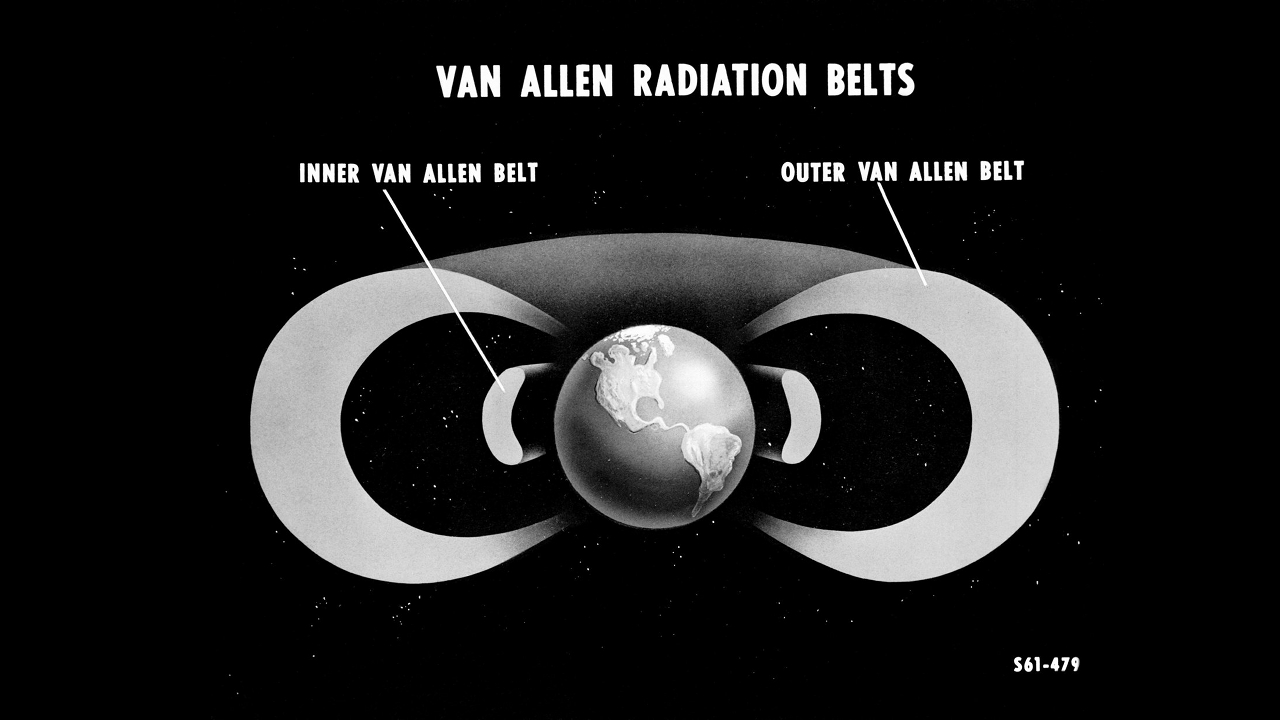What is the distance between the Kármán line and the Van Allen Belt?
2 Answers
Depends where on Earth you measure. The distance between is greatest at the Equator and narrowest at the poles.
The Kármán line is near an altitude of 100 km around the Earth. This is fairly consistent as it is a measurement of where the atmosphere becomes too thin to practically fly using lift and is used as a starting point for space.
The Van Allen Belt consists of two magnetic radiation belts around the Earth. Because of the nature of the magnetic field, the altitude and thickness varies from the poles to the equator. It also varies depending on solar activity. Wikipedia says it begins at 500 km, but it may extend lower during intense activity. Another site states it begins at 1,000 km.
Generally the distance between is a few hundred kilometers depending on location and activity of the Van Allen Belt at time of measurement.
@DanSorensen's answer is probably just what you are looking for, the distance from the Kármán line to the beginning of the intense part of the lower Van Allen belt. However, there are two (or maybe even three!), and they are fuzzy, and they are moving all the time.
The Kármán line on the other hand now has an (fairly) exact definition of 100 kilometers altitude, and I am guessing that altitude is a line perpendicular to the local geoid surface. According to Wikipedia:
Although the calculated altitude was not exactly 100 km, Kármán proposed that 100 km be the designated boundary to space, because the round number is more memorable, and the calculated altitude varies minutely as certain parameters are varied. An international committee recommended the 100 km line to the FAI, and upon adoption, it became widely accepted as the boundary to space for many purposes.link However, there is still no international legal definition of the demarcation between a country's air space and outer space link.
Here are some visualizations:
above: "Retro" or how I remember it when I was growing up. From NASA.
This early schematic of the Van Allen Belts' structure was created after the first American satellite discovered their existence in 1958. Credits: NASA's Goddard Space Flight Center/Historic image of Van Allen Belts courtesy of NASA’s Langley Research Center
above left: Newer. From NASA (click for larger).
Shortly after launch on Aug. 30, 2012, particle detection instruments aboard NASA's twin Van Allen Probes revealed to scientists the existence of a new, transient, third radiation belt around Earth, shown in this image. Credits: NASA's Goddard Space Flight Center/Johns Hopkins University, Applied Physics Laboratory
above right: Cropped from NASA's Press Kit for Radiation Belt Storm Probes Launch (click for larger).
above: From the NASA Page for Van Allen Probes.
FIREBIRD II and NASA Mission Locate Whistling Space Electrons' Origins.
And just in case you are wondering what Roadster was really doing in orbit for six hours experiencing the Van Allen belts:
Plotted using the Python package Skyfield using Roadster's last reported TLE before the 3rd burn took it out of Earth orbit and into the heliocentric orbit shown here (click for larger).
above: Same as before but with approximate path of Roadster.
-
1$\begingroup$ Are the gaps between inner and outer belts unprotected from radiation? Do you have an expanded range of distances? It looks like it's zero at the poles and maybe thousands of miles to the outermost belt at the equator. $\endgroup$ Commented Feb 11, 2018 at 14:13
-
$\begingroup$ @PatrickWalton these change a lot over time. There isn't a fixed map. It's a pretty complex subject. My goal with these images was to give a better idea about "... there are two (or maybe even three!), and they are fuzzy, and they are moving all the time." They aren't really visible until spacecraft pass through them, so all of these are really just artistic drawing. I'm not an an expert, this sounds like a good, and new question though, either for here, or for Space Exploration SE. $\endgroup$– uhohCommented Feb 11, 2018 at 14:26
-
1$\begingroup$ The Van Allen Belt diagrams really help. I was trying to research whether or not the bets touch at the poles as they appear in these images, but could not find a specific answer. $\endgroup$ Commented Feb 11, 2018 at 15:36






